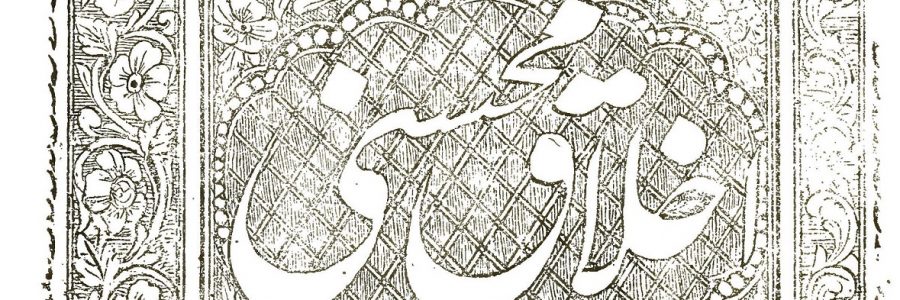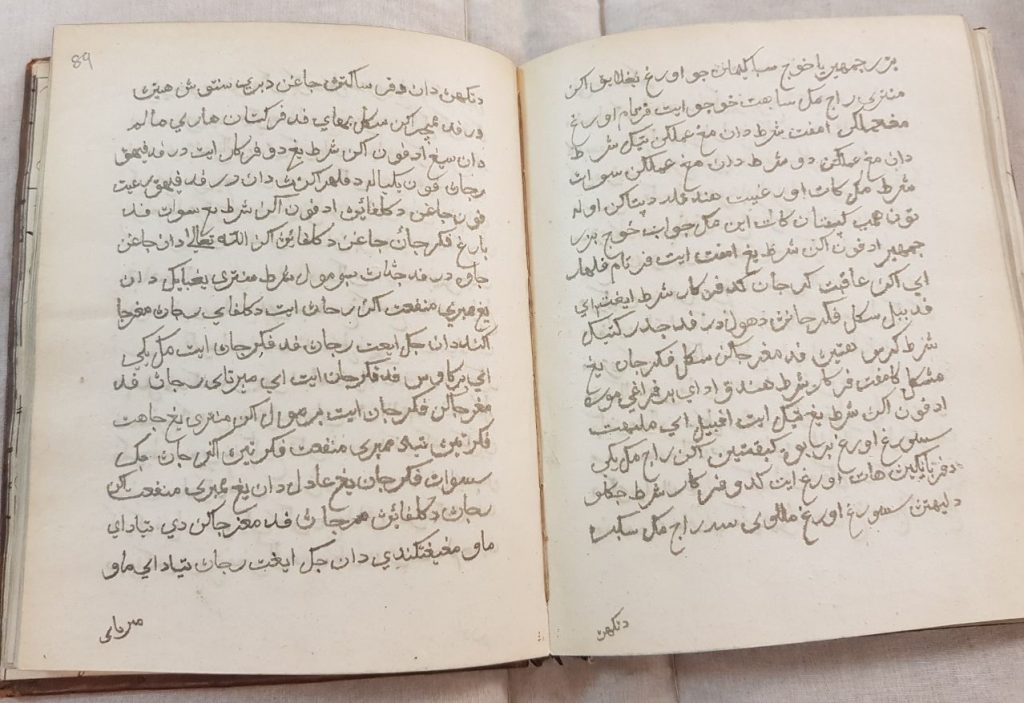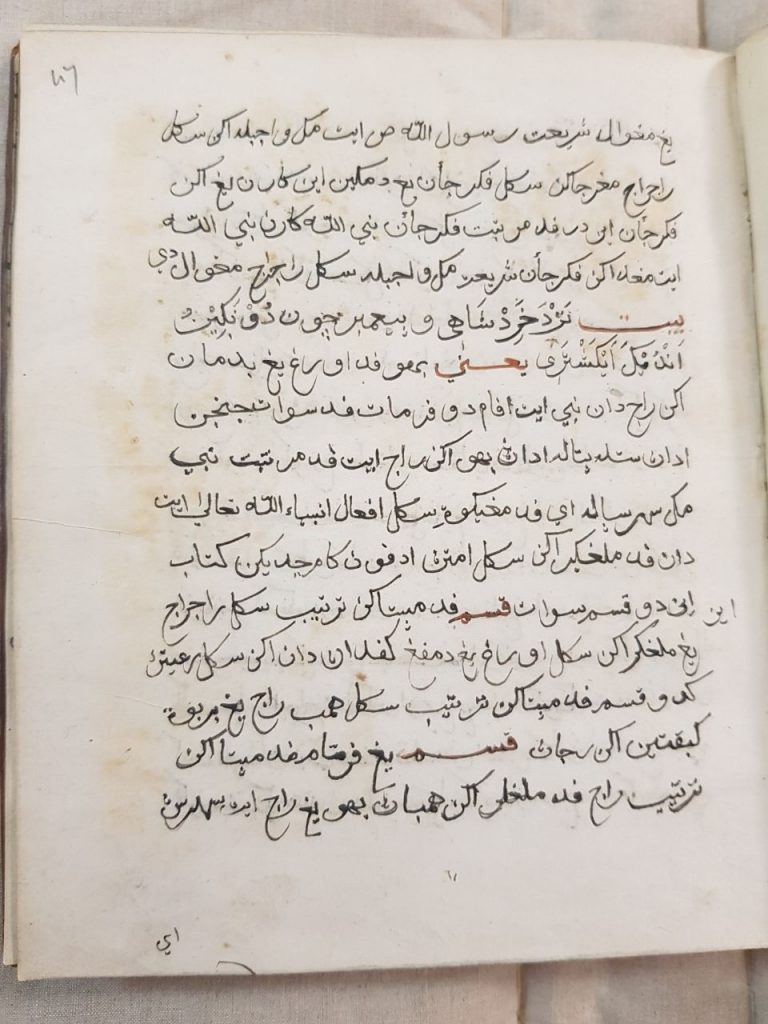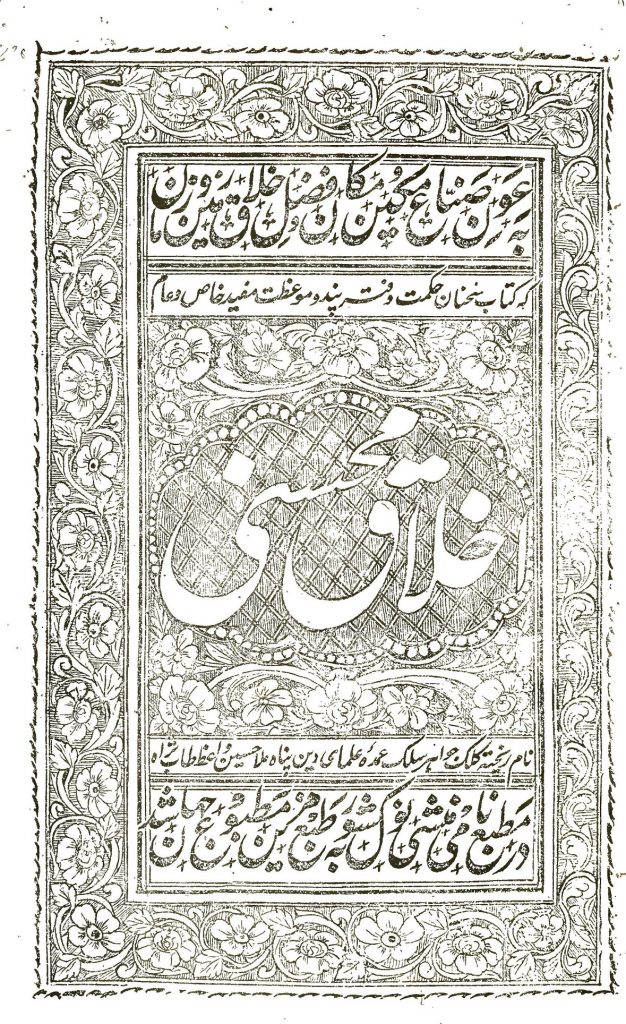
An Early “Mirror for Princes” in Southeast Asia: The First Known Malay Translation of Akhlaq-e Mohseni
This post is by Munby Fellow Dr Majid Daneshgar, whose project for 2022/23 is entitled Revisiting Malay Islamic Manuscripts in the Cambridge University Library: Global Impact of the Erpenius Collection. Majid is an alumnus of the Freiburg Institute for Advanced Studies (FRIAS), Germany, and was also a Marie Curie Fellow of the European Union.
One of the world’s oldest known collections of Malay-Indonesian manuscripts is held in Cambridge University Library (CUL). Most manuscripts in this collection belonged to the Dutch Arabist and Orientalist, Thomas Erpenius (d. 1624). This collection was later brought to the Cambridge University Library in 1632.
Among the manuscripts is Gg.6.40, which includes five treatises or parts. It was in the possession of Pieter Willemsz van Elbinck (also known as Peter Floris) and includes his signature on part IV, showing its collection place as Aceh (Indonesia) in 1604. Its third treatise from ff.46b–101a (henceforth: Gg.6.40 III) contains the oldest known “Mirror for Princes” in the Malay language. This treatise addressing lessons for rulers has been copied on different paper with different hand and ink (also “Red Lead” pigment). In fact, my discussion with the CUL’s conservation department confirmed that the paper and ink of this part are different from the others. Gg.6.40 III also includes a particular form of orthography (e.g., localizing foreign words and phrases) which is not similar to the other parts. Thus, we may assume another scribe for Gg.6.40 III.
Former scholars have offered different proposals about the texts, however, none of them has been able to detect its origin. My phrase-by-phrase analysis confirms that this manuscript is a concise translation of a famous Persian source on ethics and morality, Akhlaq-e Mohseni. The work was produced by Muhammad Husain Va’ez Kashifi “in 907/1501–2 for the benefit of Sulṭān-Ḥusayn’s son Abū’l-Muḥsin Mīrzā)”.[1] Kashifi (d. c. 1505) was one of the most prolific literary and religious figures of the late medieval Persianate World, whose works were circulated widely and have, to date, been translated into different languages in Asia and Europe. Providing instruction, lessons, patterns for rulers as well as giving general recommendations on statecraft, his Akhlaq-e Mohseni gained fame among his contemporaries, too.[2]
With a note on the cover, the whole Gg.6.40 is the only source from the Erpenius collection which states that it includes his handwriting: “al coranica quaedam, et alia Arab. ab ipso Erpenio descripta” (‘Portions from the Quran and other Arabic texts copied by Erpenius himself’).[3] Although van Ronkel is not convinced of the correctness of this statement, I went through the original Book of Benefactors (MS Oo.7.52) kept in the CUL from the 17th century, in which the manuscript Gg.6.40 is listed with its original shelf mark “A. r. 26”, also with the same Latin inscription. Regardless of its accuracy, these two statements remind us of the consensus among scholars in the 17th century that this work belonged to Erpenius.

A review of the literature shows a widespread silence about the identity of Gg. 6.40 III. Apart from the preface which introduces the author, Shaykh al-Husnayn [sic] al-Kashifi, also a commentator of the Qur’an, the undated colophon ends by introducing the work as al-Kitab Nasihat al-Muluk, the famous ethical source written by al-Ghazali, which was also translated into Malay from the Arabic version in the late 17th century.[4] This inconsistency led Ph. S. van Ronkel in 1896, Edward G. Browne (in his Handlist 1900), Ricklefs and Voorhoeve (in their catalogue 1977 and 1982) not to identify the origin of the text; some took it for granted and simply introduced “Nasihat al-Muluk” as an “unknown work” by Vaez Kashifi.
In 2004, Jelani Harun’s study, based on his thesis, tested the former literature and examined the Malay genre of “mirror for princes.” He raised serious questions about Gg.6.40 III and pronounced that the text was neither that of al-Kashifi, as cited in the preface, nor that of al-Ghazali (Nasihat al-Muluk) as mentioned in the colophon. Nonetheless, he remained silent about what the prototype of this important treatise could be. It seems to me that Harun did not realize that Gg.6.40 III is, in fact, a “concise” version of Kashifi’s Akhlaq-e Mohseni. Most poems, couplets, and stories in our Malay treatise are detectable in the Persian version. However, some lexical changes, thematic substitutions as well as rephrasing exist throughout the Malay text.
I have already discussed the possible influence of Vaez Kashifi on Malay-Indonesian Qur’an commentary (e.g., in the Cambridge Ms.Ii.6.40)[5]; however, Gg.6.40 III presents before our eyes the strongest evidence about the reception of his literature in the Malay-language regions of Southeast Asia in the late 16th and early 17th centuries. George H. Werndly, who listed sixty-nine Malay works in his Maleische Spraakkunst in 1736, introduces a manuscript as “Sejchu-‘lhusejnu-‘lkasjifij” (‘Shaykh al-Husein al-Khashifi), which could be an allusion to this treatise in the Erpenius collection of Cambridge University Library, under discussion here.
A common scholarly view points out that the first work pertaining to the ethics of statecraft in the genre of mirror for princes was produced in Malay in early 17th-century Aceh, putting forward the 1603 work of Bukhari al-Jauhari entitled Taj al-Salatin (the Crown of Kings). This is despite the fact that Taj al-Salatin includes obvious references to Akhlaq-e Mohseni and further sources used by Kashifi, himself, throughout his ethical book. Whether Gg.6.40 III was already in the possession of al-Jauhari or, according to my hypothesis, it was read and circulated in Aceh before the production of Taj al-Salatin, is subject to further investigation.
However, Gg.6.40 III provides us with a firm answer that it was produced before 1604 when Persian was a common language from the Persianate to the Malay-Indonesian World.[6] To demonstrate as clearly as possible the similarity between Gg.6.40 III and Kashifi’s Akhlaq-e Mohseni, I present the following analogy. The first instance deals with the role of rulers in implementing Shari‘a, already specified and practised by the Prophet, and indicates that the ruler’s level of significance is as high as that of the Prophet. The following red parts in the Persian prototype are identical in the Malay version:
Akhlaq-e Mohseni, South Asian Edition, 1878, p. 5 (in Persian):
[…] و آن قانون شریعتست که تعیین اوضاع آن بر وحی الهی باشد و وضع آنرا چون پیغامبر قانونی و قاعده بنهد کسی باید که آن قانون را بقدرت و شوکت خود محافظت نماید و نگذارد که کسی از حدود آن تجاوز کند و این کس را پادشاه خوانند پس درجه پادشاهی بمرتبه نبوت است […] نظم: نزد خرد شاهی و پیغمبری؛ چون دو نگینند و یک انگشتری.
Gg.6.40 III: fl. 47a (in Malay):
[…] یغ مغوال شریعت رسول الله ص ایت مک واجبله اکن سکل راجراج مغرجاکن سکل فکرجأن یغ دمکین این کارن یغ اکن فکرجأن این درفد مرتبت فکرجأن نبی الله کارن نبی الله ایت مغداکن فکرجأن شریعت مک واجبله سکل راجراج مغوال دی. بیت نَزْدَ خِرَدشَاهی و پیغمبر چون دو نگینُ اَنْدُ یْکَ اَیْکَشْتَرِی (sic) یعنی بهو فد اورغ یغ بدمان اکن راج دان نبی ایت فام دو فرمات فد سوات جنجن اداڽ ستله بتاله ادان بهو اکن راج ایت فد مرتبت نبی […]
Apart from direct translations, Gg.6.40III cites the original Persian couplet followed by its apposite Malay rendition. Another random example could be “the Story of Asma‘i” that starts with his visit to the ruler of his time, who asks Asma‘i to identify a “five-year old little girl” sitting next to him:
Akhlaq-e Mohseni, ed. Seyyed Hossein Naqibi (Qum: Institute for Islamic Sciences and Thought, 1393/2014), 348 (in Persian):
اصمعی می گوید که: روزی نزد یکی از خلفا رفتم. او را دیدم بر تخت نشسته و دختر پنج ساله تخمینا نزدیک وی قرار گرفته
Gg.4.60 III, fl. 98 (in Malay):
القصه بهو جرتری درفد اصمعی فد سوات هاری بهو اصمعی داتغ مغادف کفد راج هارون الرشید مک تتکال ایت راج دودق دیاتس کرسی شهدان […] راج اد سؤرغ کنقکانق فرمفون لیم تاهن
G.g. 6.40 III (and other treatises of this manuscript) show a strong connection between the Persianate and Malay worlds. In my forthcoming study of the Malay-Indonesian collection of Thomas Erpenius at CUL, I will revise the literature, create a new catalogue and produce an edited version of the manuscripts along with a critical introduction. This will address their philological, literary, poetic and codicological aspects, and will show how Malay scholars Persianized the 16th-century Malay world, while Malayizing Persian alphabets and orthography for the sake of indigenization.
The author thanks Clarck Drieshen and Radman Rasooli Mehrabani for providing me with helpful sources and their constructive comments on this piece. All errors are mine.
[1] Maria E. Subtelny, “The Works of Ḥusayn Vāʿiẓ Kāshifī as a Source for the Study of Sufism in Late 15th-and Early 16th-Century Central Asia.” In Sufism in Central Asia: New Perspectives on Sufi Traditions, 15th-21st Centuries, edited by Devin DeWeese and Jo-Ann Gross (Leiden: Brill, 2018), 98-118.
[2] See, Ibid.
[3] See, Ph S. van Ronkel, “Account of six Malay manuscripts of the Cambridge University Library,” Bijdragen tot de Taal-, Land-en Volkenkunde van Nederlandsch-Indië 1ste Afl (1896): 1-53.
[4] See, Jelani Harun, “Bustan Al‐Salatin, ‘the garden of kings’: A universal history and ADAB work from seventeenth‐century Aceh,” Indonesia and the Malay World 32, no. 92 (2004): 21-52.
[5] Majid Daneshgar, “Peter G. Riddell, Malay Court Religion, Culture and Language: Interpreting the Qurʾān in 17th Century Aceh,” Der Islam 98, no. 1 (2021): 293-296.
[6] For more on Persian before the 16th century, see: Majid Daneshgar, Gregorius Dwi Kuswanta, Masykur Syafruddin and R. Michael Feener, “A 15th-Century Persian Inscription from Bireuen, Aceh: An Early ‘Flash’ of Sufism before Fanṣūrī in Southeast Asia”, in Malay-Indonesian Islamic Studies: A Festschrift in Honor of Peter G. Riddell, eds. Majid Daneshgar and Ervan Nurtawab (Leiden: Brill, 2022), 86-105. As also indicated by Braginsky, Gg. 6.40 III could have been made in the second half of the 16th century. Vladimir Braginsky, “Jalinan dan Khazanah Kutipan: Terjemahan dari Bahasa Parsi dalam Kesusastraan Melayu, Khususnya yang Berkaitan dengan ‘Cerita-Cerita Parsi,” dl. Sadur: Sejarah Terjemahan di Indonesia dan Malaysia, p. Henri Chambert-loir (Jakarta: Gramedia–Ecole Française de Extreme Orient, 2009): 59-117.


